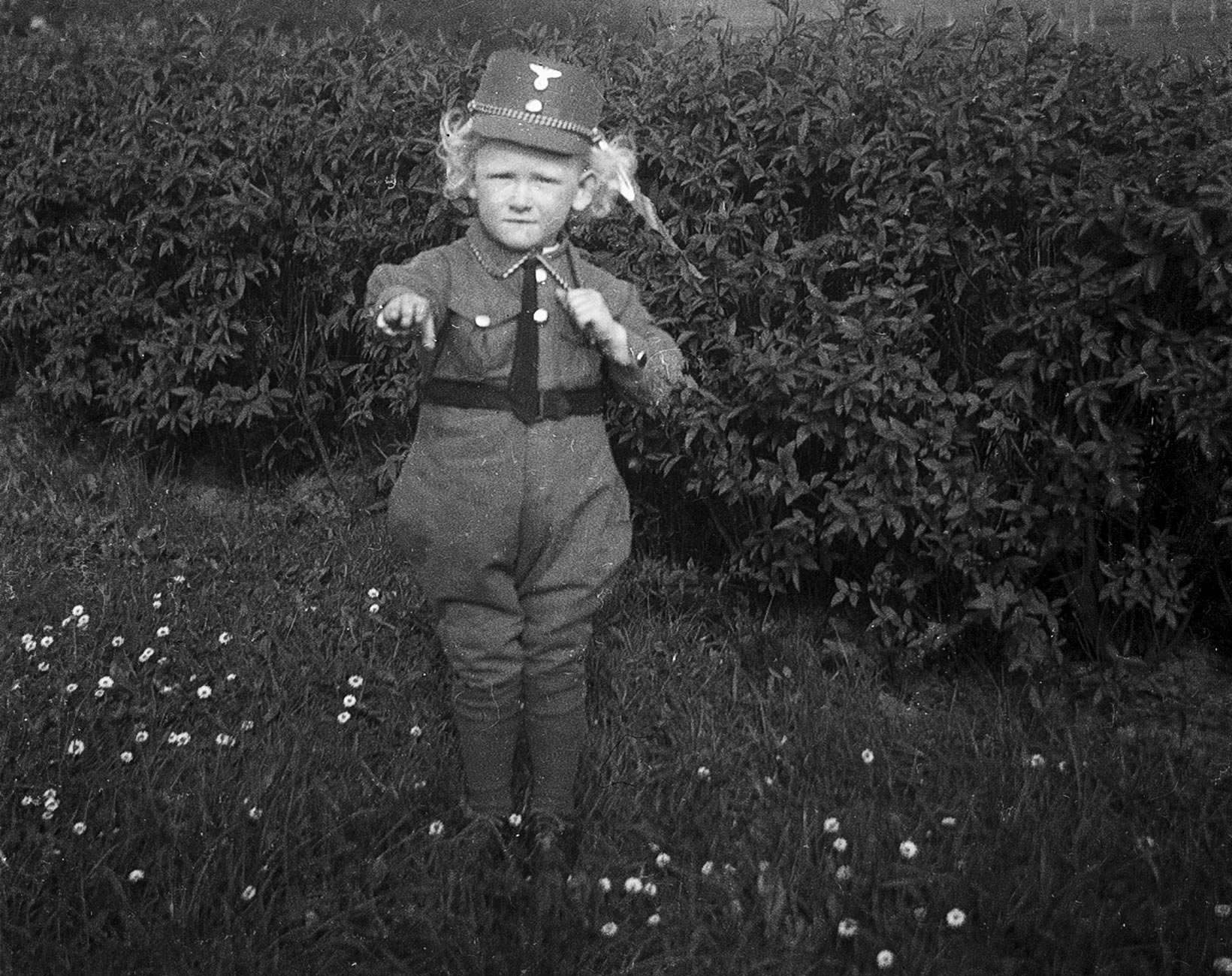
Video-DVD PAL
3:33 min
2006
Sound:
Schellackplatte „Die mißglückte Jugendzeit“ Beka-Records, Original-Lachaufnahme, 1920
Edition: 50 Ex.
Ausstellungen | Video Festivals:
A Virtual Memorial Vilnius 2013, Collective Trauma Film Collections – Beyond Memory, Vilnius/Lithuania, 2013
IM BÜRO, Hamish Morrison Galerie Berlin, 2009
Intimithy and Alienation, Museo para la Identidad Nacional (MIN) Honduras, 2007
MARTE, Museo de Arte de El Salvador, San Salvador, 2007
Videologia 2007, Wolgograd/Russia, 2007
International Short Film Festival Detmold 2007
23. Internationales Kurzfilm Festival Hamburg, 2007
VIDEOFORMES XXII, (vidéothèque éphémère), Clermont-Ferrand/France, 2007
VALUTA, Museum Goch, 2006
Publikationen:
Intimität und Entfremdung, El Salvador, 2007
VALUTA, Museum Goch, 2007
Danksagung | credit:
„Your work caused a lot of discussions among curators, audience and Jury. Thank you for your honest and brave point of view and non compromise artistic voice. You know: how important your work especially for the local context – we screened it in Stalingrad. We would like to continue our dialogue, thank you a lot.“
curator Nick Demidov, Videologia 2007, Volgograd/Russia
Die Nadel senkt sich auf die Grammophonplatte und ein melancholischer Trompeter beginnt zu spielen. Fotos schieben sich ins Bild, Familienfotos junger Leute der 30er Jahre. Das Kichern einer Frau mischt sich in das Trompetenspiel. Dann lacht auch der Trompeter mit und beide steigern sich in apokalyptische Lachsalven des nichts mehr zu verlieren Habens. Die Familienfotos dazu werden immer seltsamer und zeigen den beginnenden Wahnsinn des Dritten Reiches, wie er in das private Leben einer kleinbürgerlichen Familie eindringt.
Es endet mit dem letzten gemeinsamen Foto: er in Uniform vom Fronturlaub, bevor er für immer in Stalingrad verschwindet. Das Lachen verhallt blechern und die Nadel dreht knisternd ihre leeren Kreise. Alle Fotos wurden von meinem Großvater aufgenommen und in der Nachkriegsangst vernichtet. Mit den wiederentdeckten Negativen und zusammen mit der titelgebenden Grammophonplatte aus dem Besitz meines Großvaters entstand dieser Film.
FAILED YOUTH
A gramophone needle descends onto a record and melancholy trumpet music begins to play. Photos appear. They are family photos of young people in the 1930s. The giggle of a woman mixes with the trumpet’s song. Then the music stops as the trumpeter begins to laugh. Together their laughter climbs to the apo-calyptic pitch of those who have nothing to lose. The family photos continue and become increasingly strange. They show the beginnings of the insanity of the Third Reich as it entered into the private life of a lower middle class family.
The work ends with the last photo of Friedrich Fuhrmann: he is in uniform while on vacation from the front. It is shortly before he would disappear forever in Stalingrad. The laughter dies away tinny and is followed by the crackling sound of the gramophone needle as it revolves in empty circles at the end of the record. All of the photos were taken by my grand-father and were destroyed in the immediate post-war period. Recently I redisco-vered the forgotten negatives and together with the record, which had belonged to my grandfather as well, „Failed Youth“ came into being.
LA JEUNESSE RATÉE
L’aiguille se pose sur le grammophone et le son d’une trompette mélancolique retentit. Des photos se déplacent à l’écran, des photos de famille de jeunes gens dans les années 30. Le rire étouffé d’une femme se mixe au jeu de la trom-pette, puis le son de la trompette devient joyeux et se mêle aux pouffements de la femme dans des éclats de rires apoca-lyptiques de ceux qui n’ont plus rien à perdre. Les photos n’apparaissent plus
que rarement et montrent le début de la folie du 3ème Reich tel qu’il a pu s’im-miscer dans la vie privée d’une famille. La série se termine sur la dernière photo prise en famille: un homme en uniforme, un soldat en permission avant qu’il ne disparraisse pour toujours à Stalingrad.
Les rires se crispent brutalement tandis l’aiguille du grammophone tourne en fin de disque en crissant désagréablement. Toutes les photos ont été prises par mon grand-père et ont été détruites par peur à la fin de la guerre. J’ai découvert récem-ment les négatifs oubliés et j’ai réalisé ce film, avec comme fond sonore un disque grammophone qui a également appartenu à mon grand-père.


